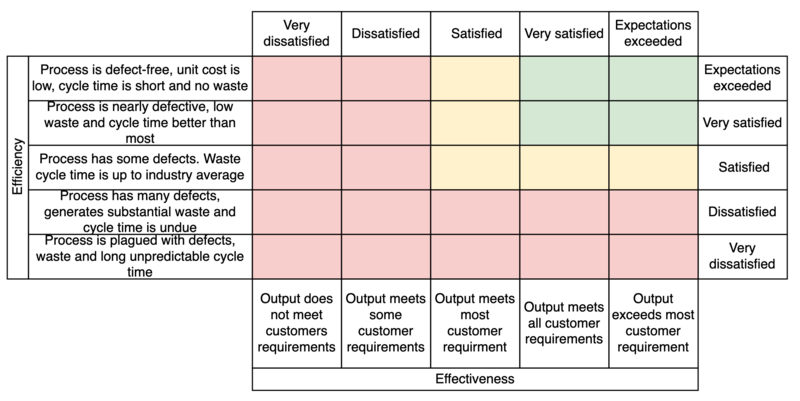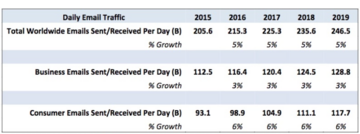Managing “emails”
Developed by Daniel Rohrer Hansen- s173922
Contents |
Abstract
Email Management generally refers to the systems and methods an employee can implement to make become more efficient when it comes to handling the abundance of email received every day. Email management is a method for increasing email efficiency while reducing the negative effects that email handling can have on an individual's productivity and job satisfaction. In the workplace, inadequate email management may waste a significant amount of an employee's time, as well as obstruct other employees, and have a detrimental influence on the firm as a whole. Email processing can take up more than 30% of an employee's workday, and if handling patterns aren't streamlined, it might be much more.
Background
The very first version of what we now know as email was invented in 1965 at the Massachusetts Institute of Technology (MIT) This was a part of the university’s Compatible Time-Sharing System, which allowed users to share files and messages on a central disk [1]. Email fast became the comment way for communication both in business and private. At the end of the 1990s emails had gone from a luxury/curiosity to become a societal expectation like having a phone number. N
Today Emails are by far the most common way of communication with a staggering 333.2 billion emails sent every day (2022) [2].
In 2020 a study made in the United States of America showed that the average office worker received about 121 emails and sends about 40 emails for business purposes everyday day [3]. In total there are estimated to exist about 5.59 billion active email accounts worldwide [3].

Importance of Email management
Both form a health perspective and a financial perspective it can be very important to understand email management. from outlooktracker it is estimated that people in workplaces on average 3.1 hours spend a day sending and hacking their emails alone(https://www.outlooktracker.com/news/office-workers-spend-a-shocking-20-weeks-per-year-on-their-emails/), as well as a 200-strong workforce on the UK minimum wage, is estimated to pay its staff £1.2m every year for reading and sending emails (https://www.outlooktracker.com/news/office-workers-spend-a-shocking-20-weeks-per-year-on-their-emails/). Studies also show that approximately 92% of employees have elevated blood pressure and heart rate when they are handling emails at work were constantly checking emails as well as having unread emails serve as a stress factor. (https://nordic-it.com/5-facts-email-often-cause-stress/). With better Email management work efficiency will increase as well as the overall mental health of workers.
Even though it is no doubt how much organizations across the globe are benefitting from using email to communicate both internally and externally, there has also been talking about the downside of this global phenomenon. Research shows that the abundance of mail office workers receives every day also can be a course for stress and a contributor to a decline of mental health. [5] A majority of people have increased stress levels related to email stressors, such as email overload. Despite the rise of social networking within and outside of the workplace, email remains the primary means of digital communication for employees.
Job satisfaction
efficentcy
Challanges and solutions
Common challenges of email management:
- Volume handling
- Sorting in what is important and what is not (spam)
- Storage and expenditure
- Over-checking emails
Ways to manage emails:
- Limiting the number of times you process mail in a day.
- Limiting the amount of time you dedicate to processing email in a given session.
- Only keeping your email program open while you are actively dealing with it.
- Checking email only when you are going to process it.
- Deleting as many messages as possible immediately.
- Responding immediately to messages that can be answered very briefly.
- Moving messages to be dealt with later to a separate folder.
- Responding to only emails that require responses.
- Limiting recipients to as few individuals as possible.
- Keeping responses brief.
- Deleting all messages that are not archived after a specific amount of time.
Software that can help with the handling of Emails
MGI’s estimates suggest that by fully implementing social technologies, companies have an opportunity to raise the productivity of interaction workers—high-skill knowledge workers, including managers and professionals—by 20 to 25 percent. (https://www.mckinsey.com/industries/technology-media-and-telecommunications/our-insights/the-social-economy) test test test
Limitations
Unfortunately it is not possible to have a fully automated system for handling emails duo to the inconsistent nature of emails contents but there are ways to make answering emails more streamlined and increase the quality
Annotated Bibliography
Following references may be beneficial for further reading on topic addressed in this article.
- ↑ The guardian (2016) How did email grow from messages between academics to a global epidemic? https://www.theguardian.com/technology/2016/mar/07/email-ray-tomlinson-history
- ↑ Earth Web (2022) How many Emails are sent per day in 2022? https://earthweb.com/how-many-emails-are-sent-per-day/
- ↑ 3.0 3.1 Outlooktracker (2020) (https://www.outlooktracker.com/news/how-many-emails-does-the-average-office-worker-receive/)
- ↑ Cite error: Invalid
<ref>tag; no text was provided for refs namedassessmenttool - ↑ Professor Tom Jackson homepage https://profjackson.com/email-stress/
